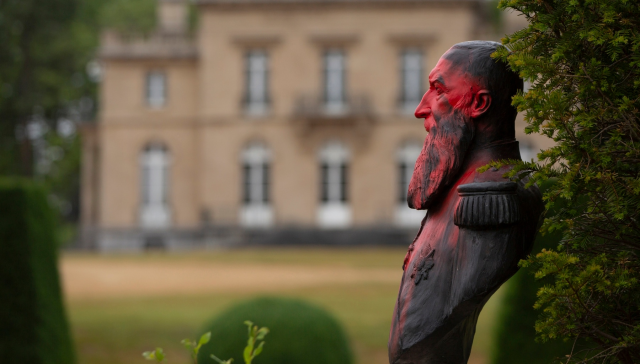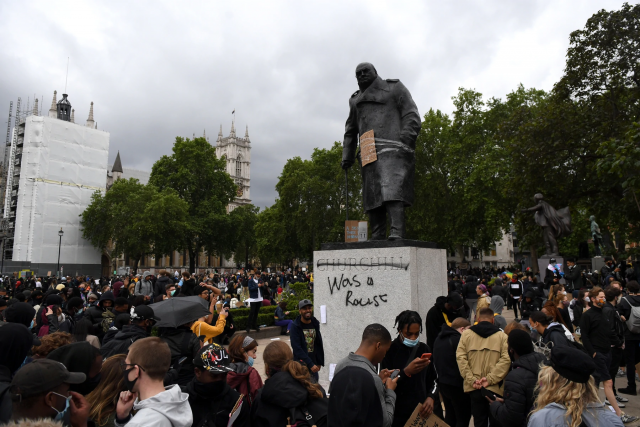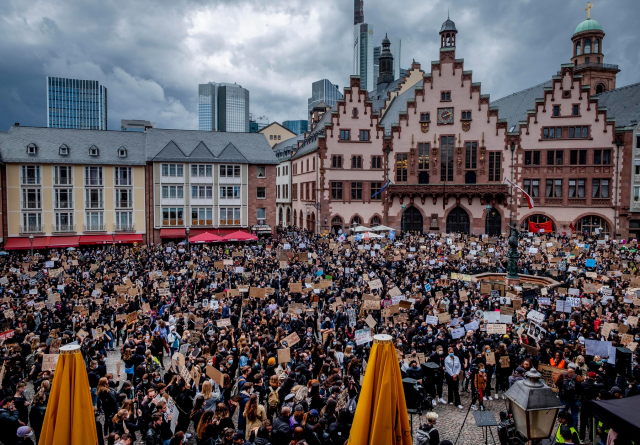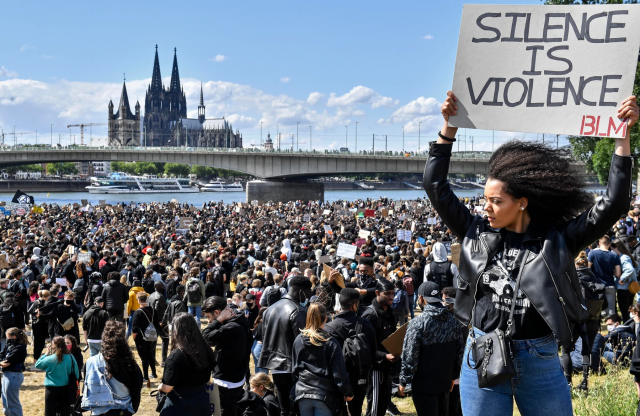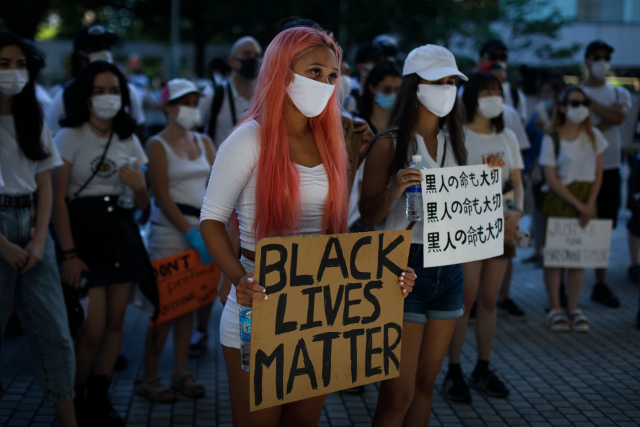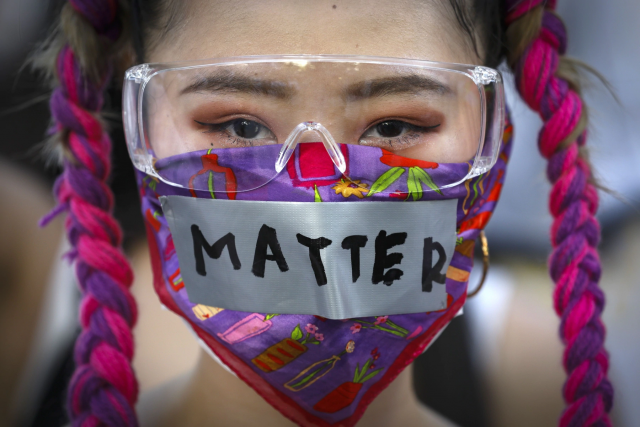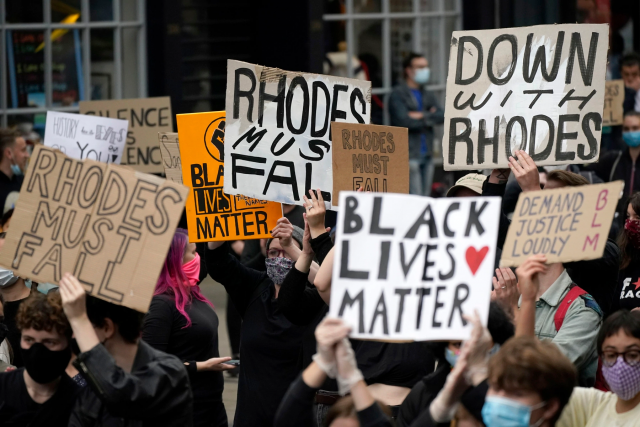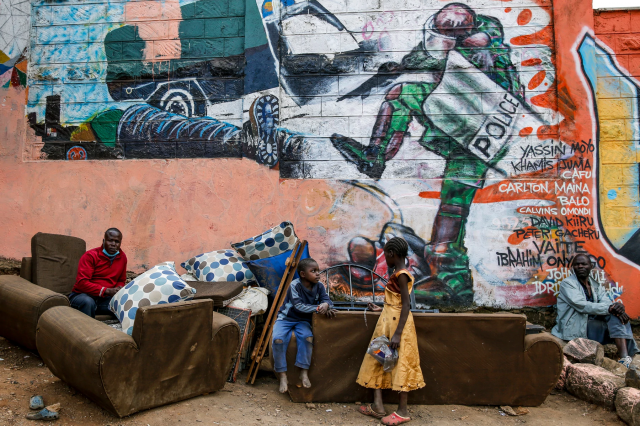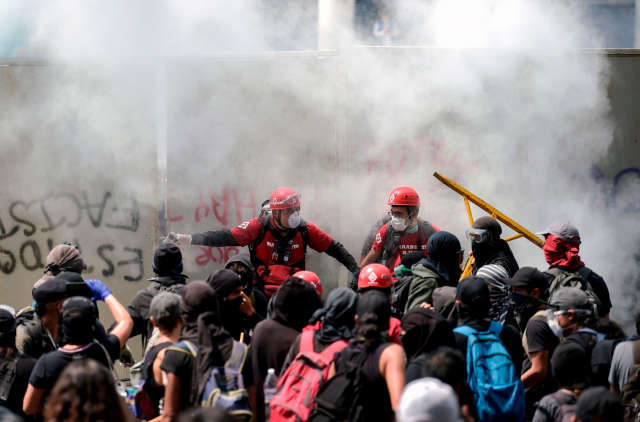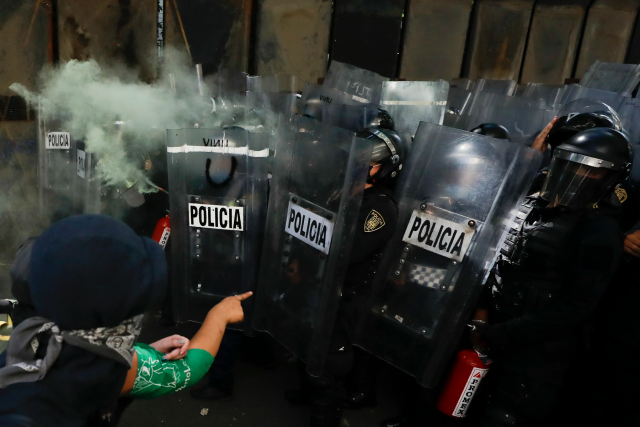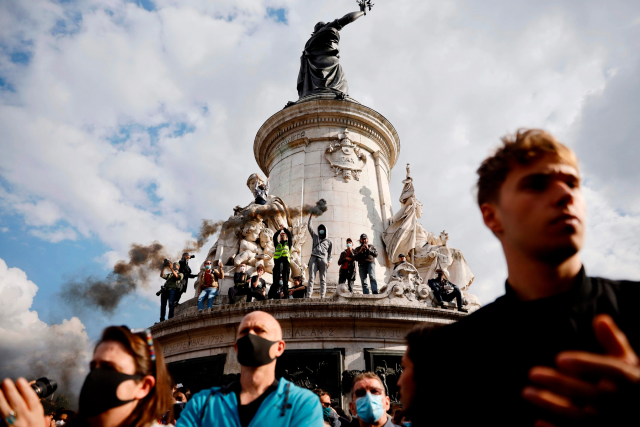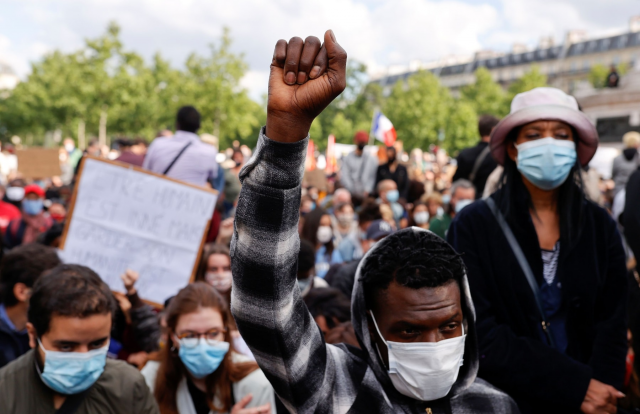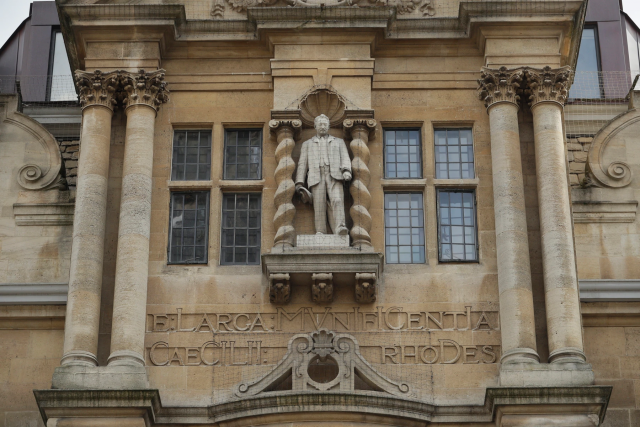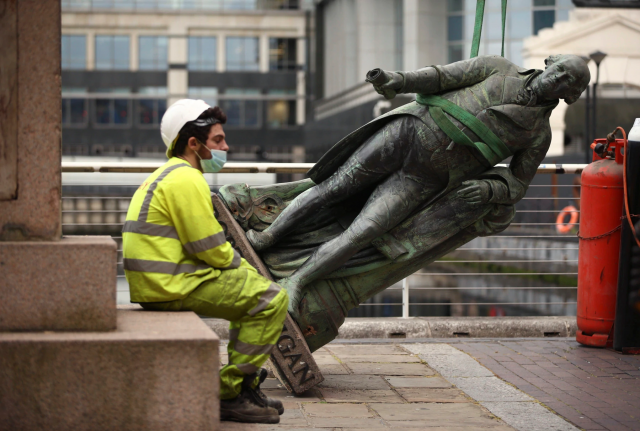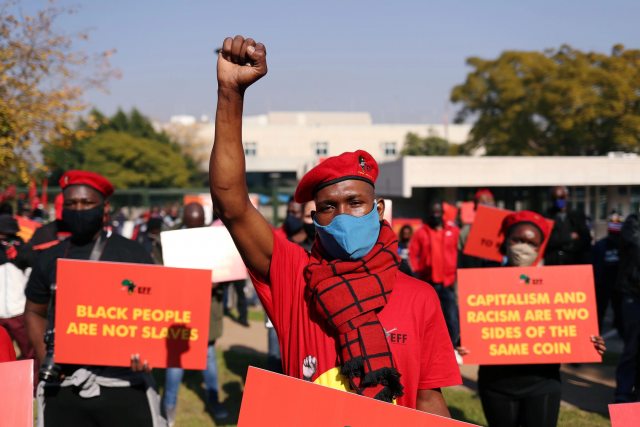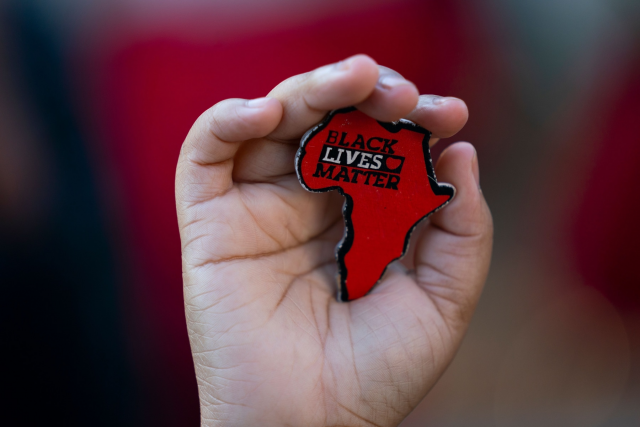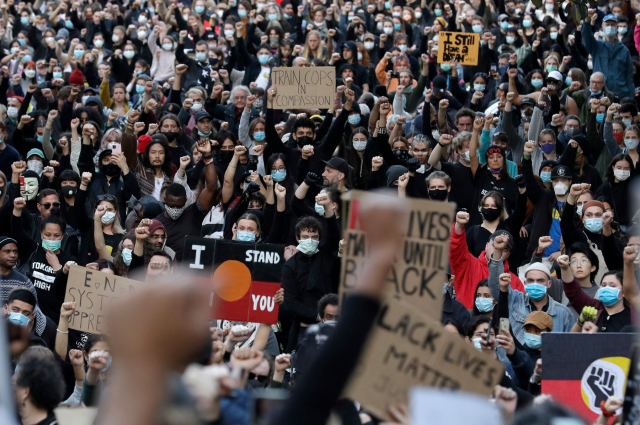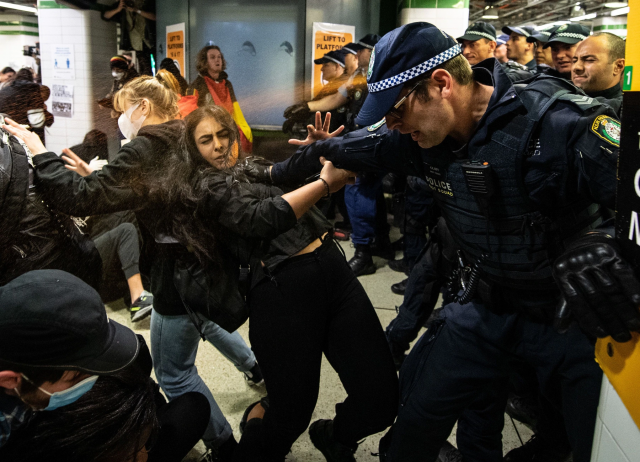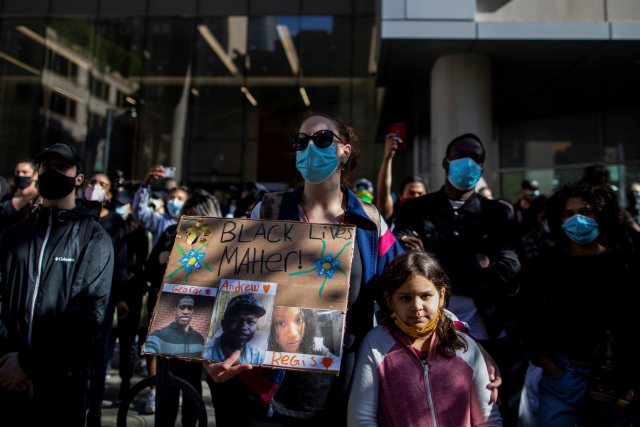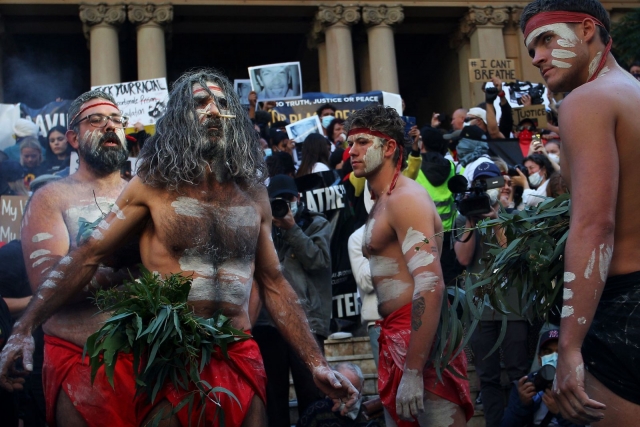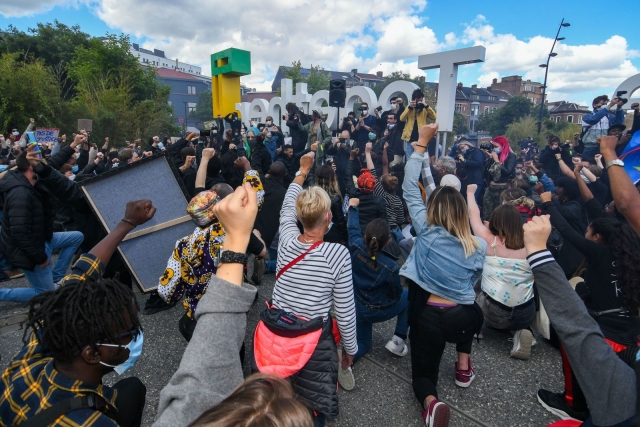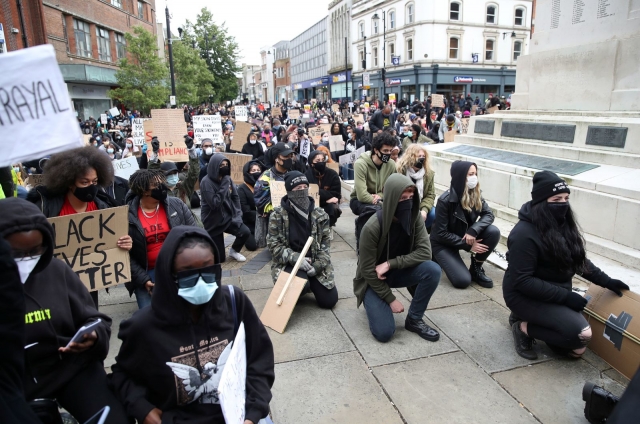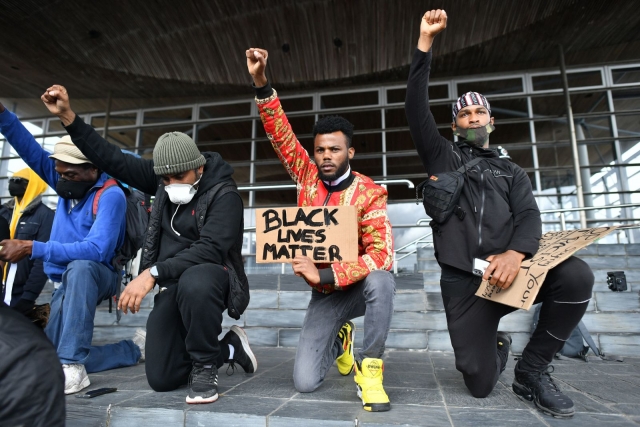Scenes of Protesting Around The World: As the protests continued in the United States in response to the killing of George Floyd, people around the world began to stand up with them.
From London to Pretoria to Sydney, people took to the streets to express the need for police reform and racial equality. Many held signs that read “Black Lives Matter,” while others kneeled.
At some protests, marchers stood in silence for the amount of time Floyd struggled to breathe while police officers detained him. Here are some of those same images of everyday people making a difference in an effort to bring an end to police brutality.
Police Brutality And Violence Towards The Press
HuffPost journalist Chris Mathias had watched people protest all day in New York City. After nightfall, quick, sporadic waves of confrontations between police and demonstrators began to erupt. Most demonstrators remained stubbornly peaceful, but some hurled objects at the rows of police blocking their way. A stone here, a bottle there.
It was May 30 in Flatbush, a neighbourhood in Brooklyn, and thousands filled the streets. They left their homes to rally against the police killing of George Floyd in Minneapolis, Minnesota, which kindled mass unrest in cities and towns from New York to California. “I can’t breathe,” – Floyd’s dying words – had become a rallying cry for the people pouring into the streets.
RELATED: INTERNET PENETRATION IN SUB SAHARAN AFRICA
Each time tensions spiked in Flatbush, columns of police, in riot gear, charged the demonstrators. As a group of officers barreled towards the crowd, Mathias held his phone steady and kept the camera rolling. One officer broke away from the pack and bucked him, Mathias said. “F*** you,” the reporter responded.
The police officer jerked back around and pushed Mathias. It happened too fast for the 34-year-old reporter to stop it: He was face down on the pavement, a swarm of officers on top of him. His arms were yanked behind his back, the officers ordering him not to resist.
He insisted that he had not resisted. “At one point, I felt like my arm was going to break the way they had it angled up on the curb,” he recalled.
With his arms wrapped up behind him, he could not reach for his phone, which he had lost during the melee. It lay on the pavement nearby, still filming.
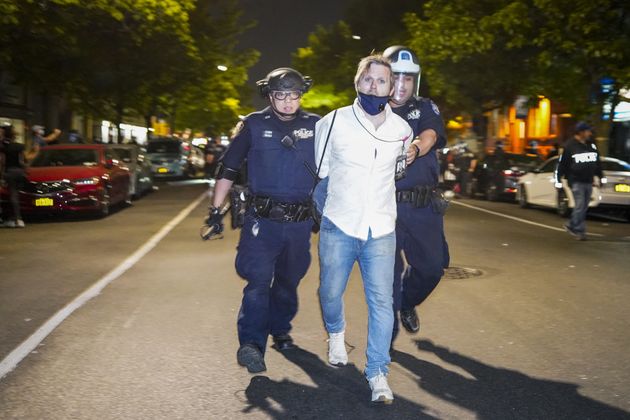
“Can you look at my press pass?” Mathias said in an interaction that was caught on video. “I’m a journalist. You’re arresting a journalist right now.”
“Then you should’ve gotten out of my way,” said the officer who pushed him.
Mathias asked the officers to retrieve his phone before carting him away for arrest.
“Shut the f*** up,” an officer barked.
After being released from a holding cell, which he shared with 15 others, none of whom, Mathias said, were provided with masks to protect them against COVID-19, he was issued a summons for allegedly failing to disperse, an order he says was never communicated to him. He will have to appear in court in September, he said.
Across the country, protests have rattled police departments. While the rallies have remained largely peaceful, police have responded harshly, pointing to scattered incidents of violence, property damage by protesters, looting and curfew violations as justification.
Flames chewed up a police precinct in Minneapolis. The windows of storefronts in several cities were busted out. Scattered cases of looting hit businesses.
As part of an effort to quell the unrest, several cities have implemented curfews, and many police departments have been accused of wanton violence: Beatings, indiscriminate arrests, use of rubber bullets and tear gas, among other things.
But as media workers scramble to cover volatile situations, more and more have been arrested, threatened or attacked by police.
Since May 26, the day after Floyd was killed, more than 400 press freedom violations have been documented by the US Press Freedom Tracker – “an unprecedented number of journalists were assaulted, arrested or otherwise prevented from documenting history”, the group said.
‘Scope and scale, we’ve never seen’
Launched in 2017, the US Press Freedom Tracker had three years of documenting press freedom violations under its belt when the demonstrations ignited nationwide late last month. The watchdog’s two full-time employees found themselves scrambling to track the reports of press freedom violations pouring in at an overwhelming rate.
Their phones kept lighting up with text messages and frantic late-night calls. Their Slack channels filled up with notifications. Throughout the first weekend of protests this May, the Tracker received more than 100 reports. “Nobody slept,” the managing editor, Kirstin McCudden, said.
“We have been quietly documenting [press freedom violations], and now we have catapulted into the international spotlight overnight.”
Between 2017 and 2019, the nonprofit group had documented somewhere between 100 and 150 press violations each year. Now, more than two weeks into the protests, the group is trudging through the more than 400 incidents they intend to independently verify, a process that McCudden says could take several months.
The list is still growing. Harassment and arrests. Equipment damaged. Projectiles fired at media workers. Attacks on reporters by police and protesters. Tear gas sprayed at news crews. “This is a scope and scale that we have not seen in the Tracker’s entire history,” McCudden said.
In Minneapolis, freelance journalist Linda Tirado was blinded in her left eye after being hit with foam bullets late on May 29 as she stepped in front of a protesting crowd to take a photo of police, according to the lawsuit she filed against state and city authorities. The suit says police ignored the press credentials she was wearing.
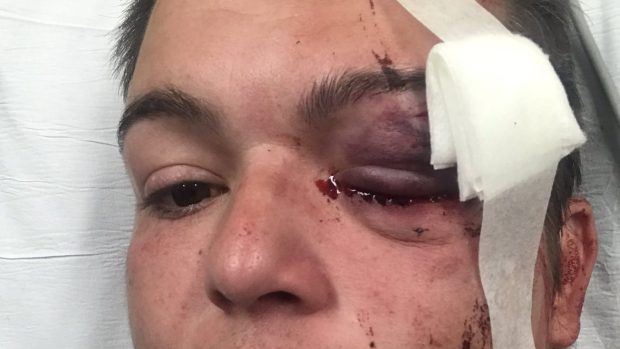
“With blood dripping down her face, she cried out repeatedly, ‘I’m press!’, but the police ignored her,” the lawsuit adds.
Earlier that day, Minneapolis police officers arrested CNN reporter Omar Jimenez along with his crew live on air. Before his hands were placed in a zip tie behind his back, Jimenez clearly identified himself as a reporter, flashing his press badge, and told the officers the crew would happily move to the area where authorities wanted them to go.
“Do you mind telling me why I’m under arrest sir,” Jimenez says as his cameraman continues to roll. “Why am I under arrest?” One by one, the rest of the crew are taken into custody, the camera – still rolling – set on the ground. The incident prompted Minnesota Governor Jim Walz to issue a public apology.
A day later, Minneapolis police fired a volley of tear gas, concussion grenades and pepper spray at NBC photojournalist Ed Ou and other photojournalists and cameramen, who were standing away from the crowd of protesters.
Similar incidents were seen and reported outside of Minneapolis.
Local television reporter Kaitlin Rust, who was live on air in Louisville, Kentucky, covering protests against the police killing of Breonna Taylor, an unarmed Black woman, was hit with pepper balls on May 29. Police appeared to be shooting directly at the camera.
That same night, in Reno, Nevada, police slapped two photojournalists with misdemeanour charges for “failure to disperse”.
A day later, radio reporter Cerise Castle says she was holding her press badge above her head when Los Angeles Police Department (LAPD) officers shot at her and protesters.
In another incident in Los Angeles, on May 30, freelance multimedia journalist Lexis-Olivier Ray said he was standing off to the side of where protesters were gathered, next to a police officer during a protest when “very quickly [the officer] jabbed” him in the stomach with his baton. “It was pretty random,” Ray said.
“[It] sent me flying back into the crowd of people and I almost lost my camera,” he said, adding that the jab left him sore for a couple of days.
“I made it clear [I was a journalist]. I was fervently identifying myself as a journalist and making sure I conducted myself in a professional manner.” Ray said that not long after he was jabbed, police started doing the same to protesters, many of whom were trying to de-escalate a tense standoff with police.
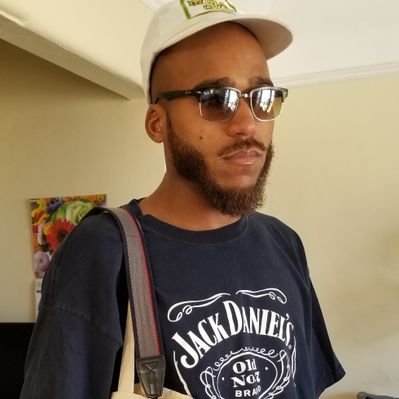
More than 2,100 people have signed a petition urging the mayor of Portland, Oregon, to “ensure that the Portland Police Bureau ceases assaulting and intimidating reporters”. The petition names at least eight incidents in which journalists – most of whom said they clearly identified themselves as reporters – were threatened or targeted by police.
Most recently, on Friday, photojournalist Beth Nakamura, says she was “shoved hard” and “slammed by a baton from behind by police”.
Mayor Ted Wheeler on Twitter called the reports “extremely concerning” and said his office would investigate “everyone”.
A militarised police, journalists historically targeted
The militarisation of police gained heightened attention during protests in Ferguson, Missouri, in 2014 after a white police officer shot dead Michael Brown, an unarmed 18-year-old Black man.
The St Louis suburb erupted in outrage, with protesters rallying for more than two weeks. Military-grade vehicles rolled through the city of about 20,000, as police lined up in gear more fit for combat abroad than for protests by US citizens on American soil. “Ferguson resembles Fallujah more than it does Ferguson,” said US Representative Emanuel Cleaver at the time.
Some of the gear, including night-vision goggles and tripod-mounted rifles for sniper action, were reportedly obtained through the US Department of Defense 1033 programme, which allows local law enforcement to obtain surplus military equipment.
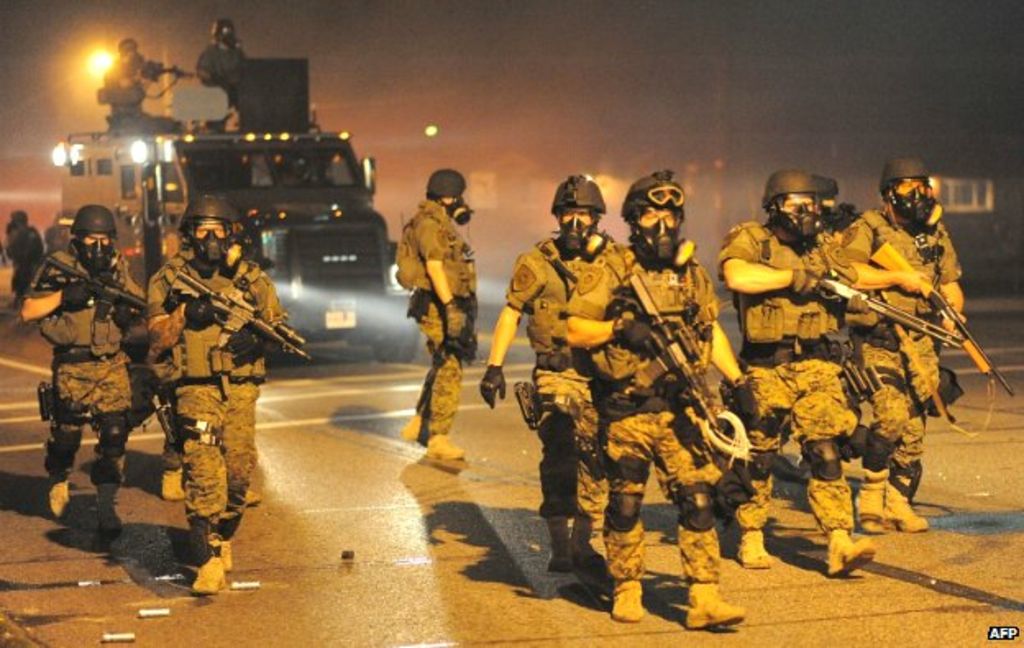
Experts say even the mere act of wearing the military-grade garb can put police in the mindset that conflict with protesters is inevitable.
In Ferguson, the protests by day remained relatively peaceful, but looting and fires were seen on some nights. Protesters were hit with violent arrests, tear gas, rubber bullets, flashbangs and other non-lethal projectiles. Journalists did not go unscathed.
An Al Jazeera America crew was forced to abandon its camera and other equipment after Ferguson police fired tear gas and rubber bullets its way. Journalists were also threatened for having lights on their cameras. According to CPJ’s Radsch, at least 11 journalists were arrested during the Ferguson unrest.
Less than two years later, during the protests against the Dakota Access Pipeline in Standing Rock, journalists and protesters alike were targeted again by police with tear gas and rubber bullets.
Several local journalists were slapped with trespassing and/or riot charges for their coverage of the protests. Most of those charges were thrown out by judges or dropped altogether. At least two journalists who went to trial were acquitted.
In January 2017, as Donald Trump celebrated his inauguration in Washington, DC, hundreds were rounded up by police during protests against the right-wing president, including a handful of journalists. They faced charges of felony rioting that could have meant up to 70 years in jail. Those charges were later dropped.
“This is an ongoing issue,” Radsch said, noting, however, that anti-press rhetoric coming from the White House and the distrust in the media, has created “a really volatile situation”.


